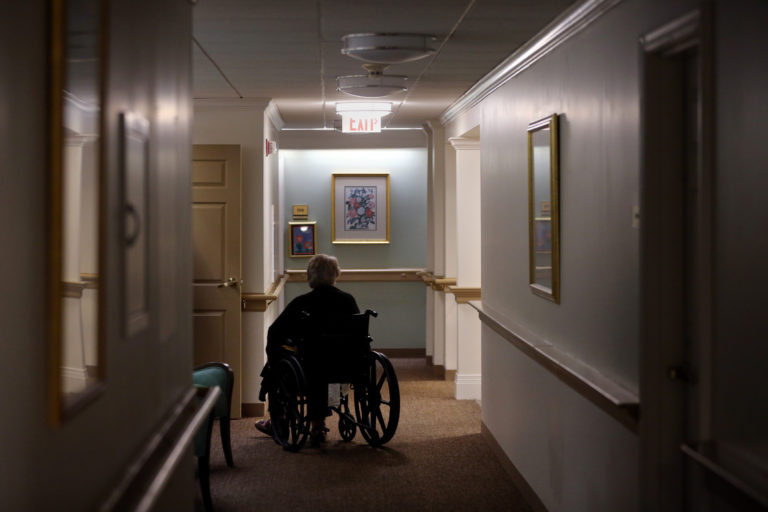Despite current operational and financial challenges in the nursing home sector, a transitional care program and physiatry partnership has successfully reduced readmission rates from 29% to 9% in several facilities.
OSF HealthCare, a 17-hospital system in Illinois and Michigan, collaborated with Puzzle Healthcare, a physiatry and care coordination management group, to implement a care transition program in over 50 nursing homes. One participating operator was Allure Healthcare Services.
Katie Hughes, regional nurse consultant with Allure Healthcare Services, praised the program as an "extraordinary achievement." OSF approached Allure in May 2023 to partner with Puzzle, and now Puzzle physiatrists are present in all 15 Allure facilities, extending beyond the OSF partnership.
Hughes said the component she found hugely beneficial is the follow-up care provided during the patients' stay, which bridges the gap between therapy and needs such as pain control, enabling residents to be fully effective in therapy and make progress.
Matt Nieukirk, director of OSF's SNF practice, said that OSF launched the care transition program about a year ago. Before the program, patients discharged from the hospital to a nursing home often returned to the hospital after about four days. Ideally, the SNF stay lasts between 14 and 18 days before the patient is sent home, Nieukirk explained.
Ahzam Afzal, co-founder and CEO of Puzzle, noted that the group has been involved in value-based care for the last decade. When engaging with a health system, they closely examine readmission penalties.
Afzal said they typically find that a high proportion of readmissions originate from the post-acute space. Inadequate staffing makes discharge planning challenging for SNFs, and OSF struggled to monitor patients post-discharge, which hindered effective follow-up and the ability to address potential exacerbations.
Looking ahead, Afzal emphasized that groups like Puzzle will play a crucial role in cost-sharing programs such as the Accountable Care Organization (ACO) Realizing Equity, Access and Community Health (Reach) and the Transforming Episode Accountability Model (TEAM). TEAM, a bundled payment model, covers all costs associated with a 30-day episode of care, aligning with the timeframe of OSF and Puzzle's care transition program.
Afzal said the goal of physiatry is to provide preventative care that helps patients meet their physical rehabilitation needs and achieve their maximum level of function before discharge. This proactive approach not only improves patient outcomes but also reduces the likelihood of readmissions.
There was no cost for having the physiatrists on site or participating in the care transition program, Hughes said. Groups like Puzzle generate revenue through their billing for services, which does not impact Allure's financials.
Additionally, Hughes mentioned that physiatrists follow the patient for 30 days after their skilled nursing visit. They utilize remote patient monitoring to continuously check for changes in functional status or any decline in function.
Ideally, the social service director would handle this in a skilled nursing facility, but they know that the staff can quickly become overwhelmed depending on the circumstances, Hughes said. Puzzle provides an additional layer to ensure multiple people are checking in on patients post-discharge.
Allure's directors of rehabilitation and directors of nursing (DONs) appreciate this extra support, as it alleviates some of the strain from other tasks, Hughes noted.
Comprehensive Rehab Consultants, an Illinois physiatry group, emphasizes that small interventions lead to better outcomes. The group helps identify risks that could lead to readmission and assists patients in recognizing common concerning symptoms, such as those of a UTI.
For a successful care transition program, physiatrists should facilitate "bi-directional communication," meaning clinical consultations with the clinicians who treated the patient to identify these risks, said Sarah Cameron, vice president of care transitions for Comprehensive.
Comprehensive aims to expand its client base beyond skilled nursing facilities to include hospitals, similar to what Puzzle is doing, to improve care coordination services. Currently, Comprehensive shows a 3.9% patient-reported readmission rate, compared to the national average of 14%.
OSF managed to integrate Puzzle into partnering facilities within half a year by allowing these facilities to join their preferred network. Approximately 57 nursing homes are currently participating in the program facilitated by OSF. Out of OSF's 17 hospitals, about three to seven nursing homes participate within each area.
The goal of this program was to work with the nursing homes and hold them accountable, said Nieukirk. When patients arrived, the aim was to do everything possible to keep them there and prevent readmissions to the hospital.
Physiatry aims to help high-acuity and rehab patients reach their highest level of functionality, enabling them to get stronger, participate in therapy, and improve their activities of daily living.
Additionally, groups like Puzzle and Comprehensive focus on reducing costly readmissions, improving patient health among underserved populations, and lowering the cost of care across the continuum, said Afzal, which are key pillars of cost-sharing programs like ACO and TEAM.
The ACO Reach model employs an innovative payment approach to support care delivery coordination, especially in underserved communities, Afzal explained. Physiatry groups play a significant role in these efforts.
And from a provider leadership and governance perspective, the ACO Reach model requires 75% control of each ACO's governing body to be held by providers, added Afzal. Physiatry groups, with their specialized expertise, are uniquely positioned to lead these care initiatives and drive clinical excellence.
Hughes noted that the program has positively impacted quality measures, particularly in functionality and mobility, since Puzzle physiatrists work with both post-acute and long-term care patient populations within the facility.
Hughes observed that there seems to be a better team approach to collaborative care, and improved outcomes both within and outside the facility.
Hughes said that it almost escalates the immediacy of care by having them on site in the buildings. Typically, a medical director is not rounding daily, and having Puzzle Health provide those eyes and boots on the ground has really helped those outcomes.
Having physiatrists in-house reduces the need for trips to specialists such as cardiologists or nephrologists, further improving outcomes, Hughes added.
